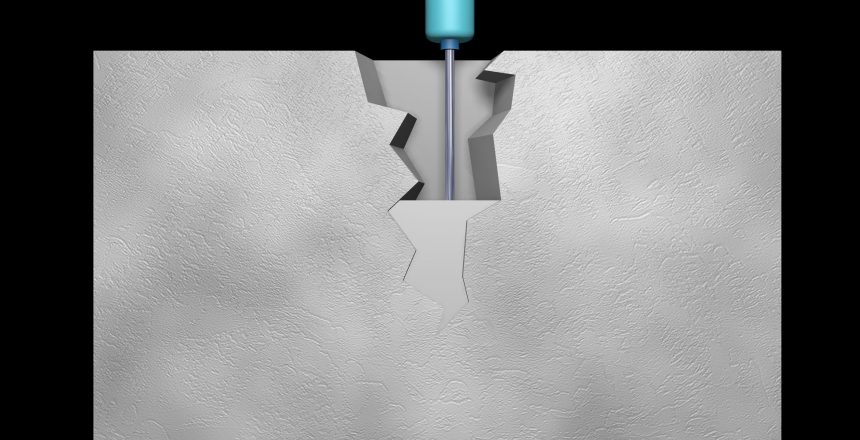Cracks in the concrete can be relatively simple fixes if they happen in a walkway or driveway. However, when that crack happens in the foundation or in a wall, the repair becomes essential for the safety of the building. There are a couple different reasons cracks might appear in the foundation, but it should be clarified that concrete crack repair is a task that cannot be delayed.
Homeowners may notice cracks in their patio or on the garage floor, but any building can develop cracks in the basement, either through the foundation flooring or wall. Cracks may appear because of shrinkage or thermal movement, among other causes. Those concrete cracks may be only minor at the beginning, but when ignored will cause extreme damage or losing structural integrity.
Water can seep through almost any opening that it is given. Over time, those cracks will widen, which will then allow even more water to get through. Repairing those cracks should be the first thing on your mind as soon as you notice the problem, otherwise you could face losses beyond what it would cost to fix.
Concrete crack injection happens when a fluid resin is forced into a void in a foundation wall. As that resin cures, the crack will no longer exist and the repair has been completed. That resin is composed either of an epoxy or polyurethane foam. Either material will finish the task.
For cracks that need to be structurally repaired to the strength of the surrounding concrete, or even stronger, then an epoxy should be used. Epoxies can be ultra-thin or even paste-like, which help them accommodate many crack widths. The wider the crack, the thicker the epoxy. Epoxies can take hours to harden, but that allows it to flow into all the smallest crevices, ensuring that the structural integrity has been maintained.
Polyurethane foams are faster-setting, and are effective alternatives to epoxies, especially if there is a concern that the material could leak out of the back of the crack. These should be used only for waterproofing a crack, and not for structural repairs.
Just as the proper material needs to be considered, the proper injection pressure should also be considered. A gradual introduction of the material, either epoxy or polyurethane, is effective at crack injections. The slower process will ensure that the crack is filled. However, higher pressure injections are great for repairing cracks in thick walls, or when a high volume of water needs to be stopped.
Filling in concrete cracks is done for more than just cosmetic reasons, but it is done to protect the structural integrity of your building and to prevent the worst water damage possible. D.C. Byers Company/Grand Rapids’ crack injection services work on a variety of different surfaces and building material.
To get a quote on crack injection or other concrete repair needs, call DC Byers Company/Grand Rapids today at (616) 538-7300. Our experience and expertise allow us to assess the damage correctly and plan how to perform the repairs to allow you to use your space properly.
For concrete restoration and repair, DC Byers Company/Grand Rapids looks at all the factors contributing to the deterioration of the concrete. By understanding the underlying problems, we can start working on the most satisfying and cost-effective solutions.
